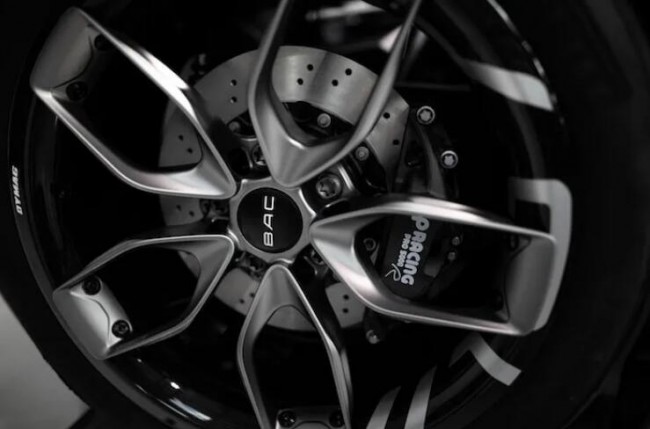570kg weight, 40 pieces3D printingCustom components, lightweight wheels created by generative design, overlays made from graphene-enhanced carbon fiber materials… all make the BAC Mono light-duty race car different.
The light racing BAC Mono for city roads. Source: Autodesk
![]() Personalization and Lightweight
Personalization and Lightweight
The BAC Mono is a lightweight racing car that can also be driven on city streets thanks to its ability to meet legal requirements for pedestrian and safety protection. The BAC Mono comes with a 4-cylinder 2.3-liter turbocharged engine that makes 332 horsepower, and while it’s not particularly powerful, it benefits from light body weight and can go from zero to 60 mph in just 2.6 seconds/ hour, with a maximum speed of 170 mph.
The cost of each BAC Mono is $250,000, and due to the high cost and low number of manufactured3D printingTechnology becomes the logical way to manufacture some parts.About 40 parts of the new BAC Mono are3D printingTechnically manufactured, including headlights, rearview mirrors, rear light covers, etc.
The manufacturer of BAC Mono is a small car manufacturer specializing in customized vehicles. Some parts only need to produce 30-50 pieces per year, and some parts in the vehicle are customized for customers, such as steering wheel, pedals, etc. .and3D printingTechnology provides an economical and fast manufacturing method for this low-volume or high-end customization requirement.
In addition, generative design technology makes it easier to achieve personalized custom design of components.3D printingReinforcing each other, the combination of the two technologies will enable the creation of more complex parts than traditional designs.Interestingly, though, often the “stunning” designs that are automatically generated through generative design have complex shapes that are almost only those that are insensitive to complexity.3D printingIt takes technology to make it, but in the design of BAC Mono auto parts, designers consider the economics of manufacturing, so machined parts, such as car wheels, are designed through this technology. The software used in the design was Autodesk Fusion 360.
Generative design generated lightweight wheel hub, processing method: mechanical processing. Source: Autodesk
The wheels of BAC Mono are products that need to be mass-produced, so using a more mature traditional process can bring cost advantages. Designers imposed constraints on the design, resulting in a wheel suitable for 5-axis CNC milling, but the generative design produced an alloy wheel that was 35% lighter than a standard wheel, at just 2.2kg per wheel. BAC hopes to make more innovations in the lightweight design of auto parts through generative design technology. The next realization direction is the suspension system and chassis parts, but it did not disclose whether it will3D printingas the manufacturing technology for these parts.
Ian Briggs, co-founder and design director of BAC, said that without any constraints on generative design, you will end up with only suitable3D printingmanufactured structure. However, considering the economics of manufacturing, the design results generated by generative design need to be compromised in the direction suitable for traditional manufacturing techniques. In the case of this article, the hubs of BAC MONO were generated by generative design and manufactured by traditional machining techniques.However even3D printingOnce the components are put into the entire manufacturing process for overall consideration, the post-printing process after printing also needs to be considered in the initial design, especially when metal3D printingWhen parts still need to be machined,3D printingThe connection and design compromise between technology and traditional manufacturing technology is an unavoidable topic.
Autodesk has released a solution to this problem with the 2.5 axis* version of its Fusion 360 software, which is primarily used to generate milling constraints that break through3D printingdesigned so that users can3D printingCombining better with traditional CNC milling, these designs break away from the “bionic shape” we’re familiar with from generative design, but instead look closer to traditional designs. Additive Manufacturing –3D printingand 3-axis and 5-axis milling have their own characteristics that make it seem like an insurmountable “chasm” between the two, and the 2.5-axis version makes it available to anyone with a CNC milling machine. ” Eclectic” design for processing.In the view of 3D Science Valley, this method, with intelligent design methods, has opened up3D printingThe “last mile” of the connection between technology and subsequent machining processes.
(responsible editor: admin)




0 Comments for “Custom Parts and Lightweight Elements in High-End Racing BAC Mono”